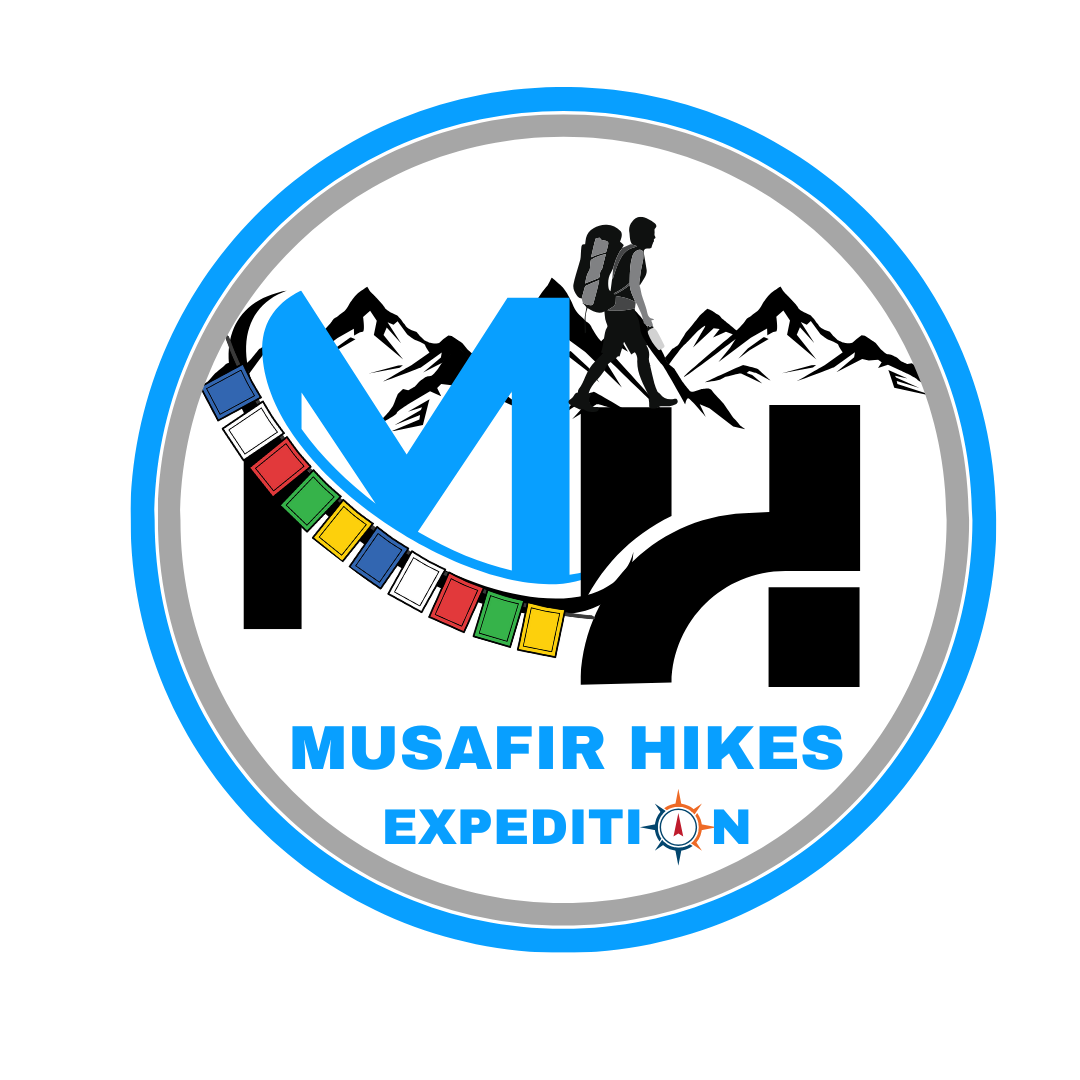Region
Uttrakhand | India
Duration
10 Days
Max. Altitude
11,755 ft.
Trekking Km.
42- 44 kms
Grade
Easy To Moderate
Get in Touch with Our Trek Expert
- 91-9634395113
- info@musafirhikes.com
- Monday - Saturday: 10 AM to 06 PM
Rs. 21,900 /Person
Fixed Departure Dates
Sept 2025
- 5% GST will be applicable on Trek Cost and Add-ons.
- Meeting Point( Pickup/ Drop Point ): Hotel Milan Palace near Railway Station,Dehradun.
- Reporting Time: 6:00 am
- Drop Time: 6:30 pm to 7:30 pm (Timings are subject to change based on weather and road conditions).
- Please reach Dehradun a day before to avoid any delays.
Overview
The Char Dham of Uttarakhand—Yamunotri, Gangotri, Kedarnath, and Badrinath—are four revered Hindu pilgrimage sites nestled in the majestic Garhwal Himalayas. Each dham holds deep spiritual significance and is associated with sacred rivers and ancient legends.
Pilgrims undertake this holy journey not just for religious fulfillment, but also to experience the raw beauty of the Himalayas and the serene energy of these timeless places.
Embark on the Char Dham Yatra with Musafir Hikes—with safe transport, comfortable stays, and spiritual guidance, we ensure your journey is peaceful, purposeful, and memorable.
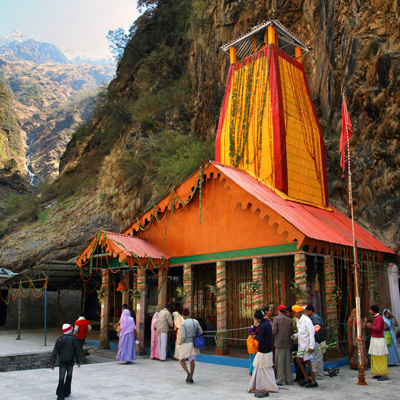
Yamunotri
Source of River Yamuna & home to Goddess Yamuna.
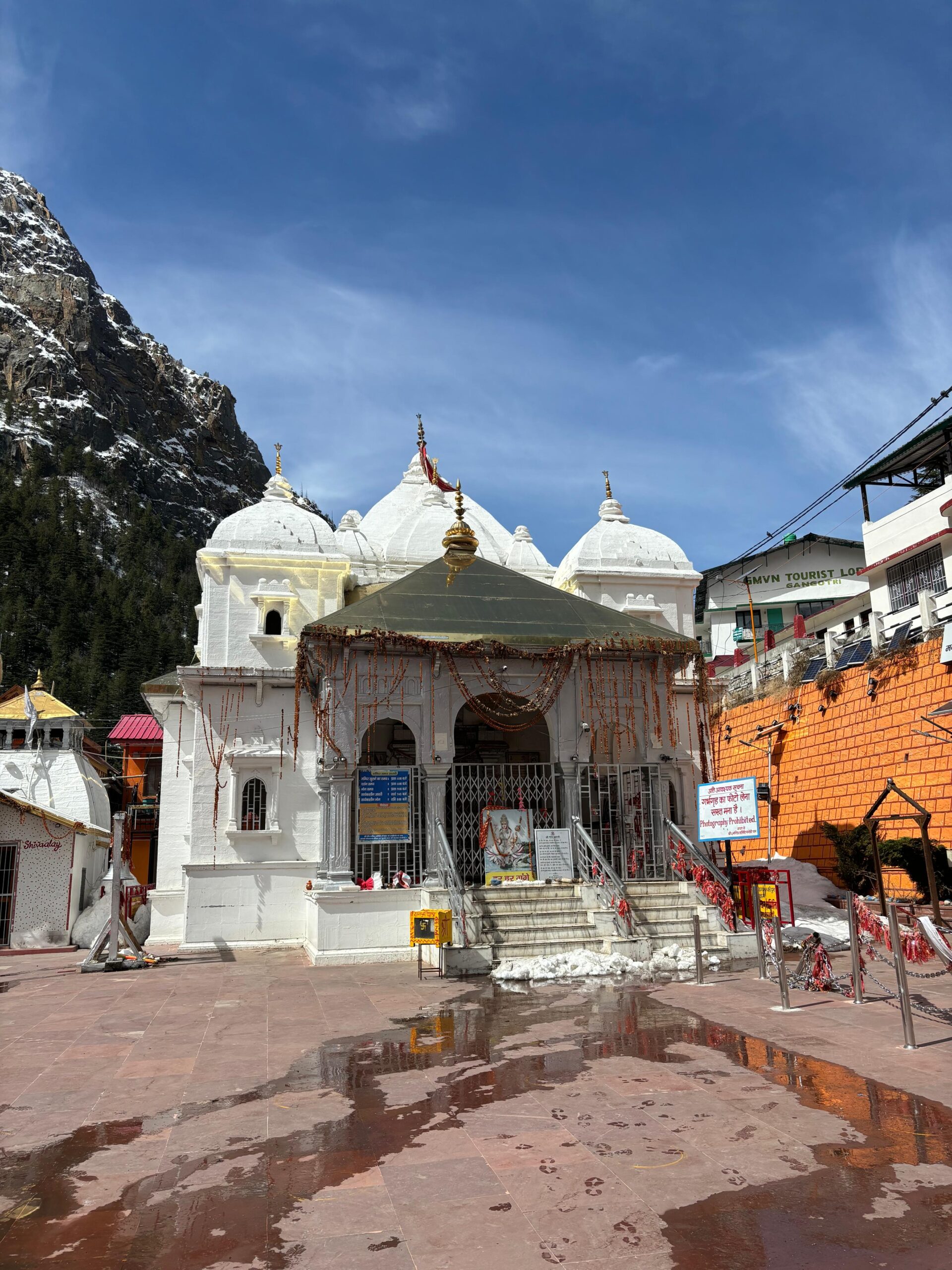
Gangotri
Origin of River Ganga & shrine of Goddess Ganga.
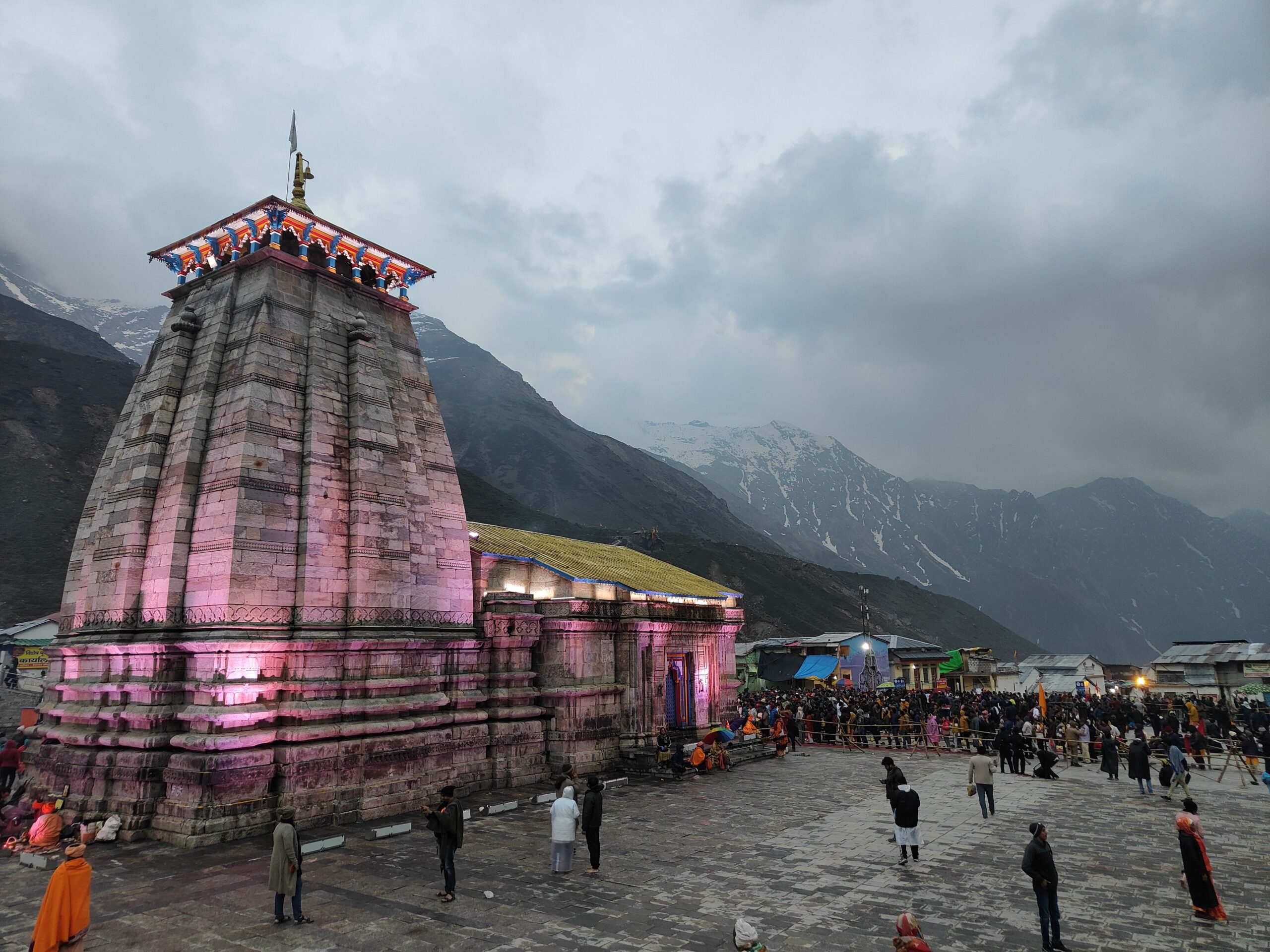
Kedarnath
One of the 12 Jyotirlingas of Lord Shiva.
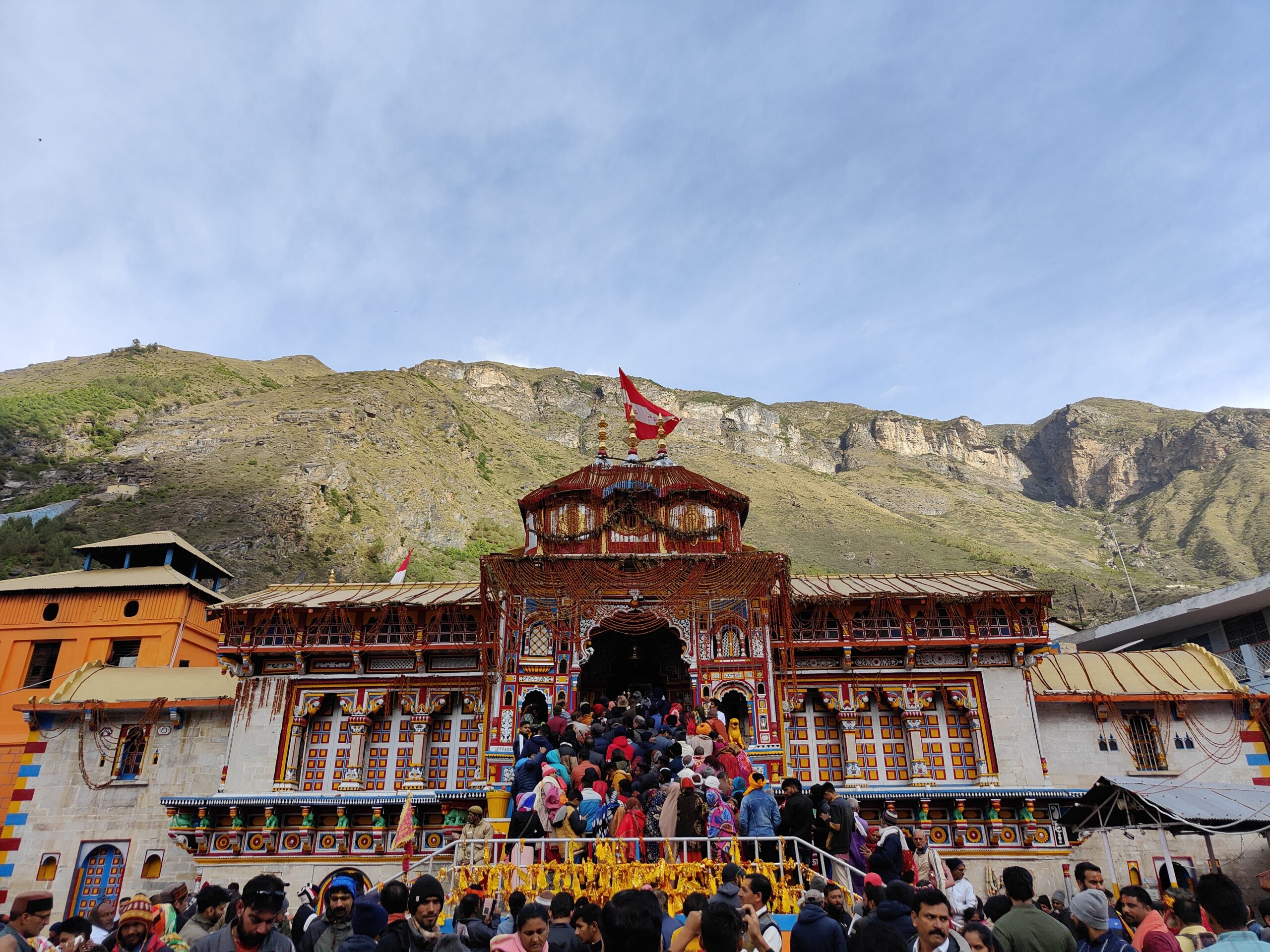
Badrinath
Sacred shrine of Lord Vishnu in his Badri form.
Opening And Closing Dates For 2025

Yamunotri
30 April 2025- 13 November 2025

Gangotri
30 April 2025 - 14 November 2025
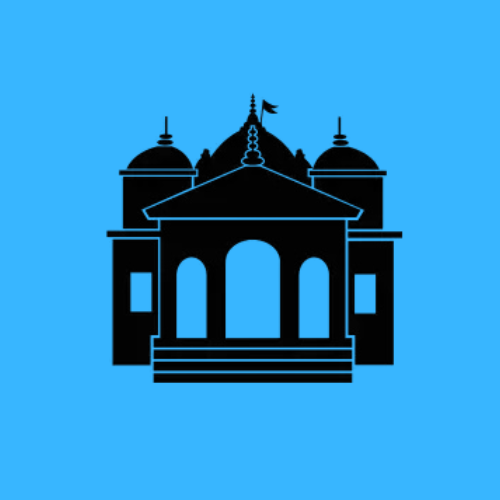
Kedarnath
7 May 2025 - 16 November 2025

Badrinath
10 May 2025 - 23 October 2025
Who Can Participate
- Age Requirements:
- April to November: 9 years.
- December to March: 11 years.
- First-timers are welcome, though prior trekking experience is preferred. Good fitness is a must.
- Fitness Criteria:
- The Trekker should have sufficient stamina to cover 5 km of distance by jogging in 35 minutes without stress or 10 km of distance in 80 minutes without stress
- If the trekker prefers cycling he/ she should be able to cycle 10 km of distance in 30 minutes .
- If the trekker wants to carry a backpack then he/she should be able to carry a 10-12 kg backpack. If opt Off-load option then the trekker should be able to carry a 3-5 kg backpack.
- If a trekker’s BMI is more or less than the normal range (18-29), please consult our Trek Coordinator before booking.
Chaar Dhaam Itinerary
DAY 1
Dehradun to Kharadi
Distance: 130 km
Driving Time: 6-7 hours
Altitude: 1,500 m
DAY 2
Kharadi → Yamunotri → Kharadi
- Drive Distance: 55 km
- Trek Distance: 5 km
- Altitude: 3,293 m
DAY 3
Kharadi → Netala
- Drive Distance: 135 km
- Altitude – 1,829 m
DAY 4
Netala → Gangotri → Netala
- Drive Distance: 95 km
- Altitude : 1,829 m
DAY 5
Netala → Sonprayag
- Drive Distance: 236 km
- Altitude: 1,829 m
DAY 6
Sonprayag → Gaurikund → Kedarnath
- Drive Distance: 7.8 km
- Trek Distance: 22 km
- Altitude: 3,583 m
DAY 7
Sonprayag → Gaurikund → Kedarnath
- Drive Distance: 7.8 km
- Trek Distance: 22 km
- Altitude:1,829 m
DAY 8
Sonprayag → Pandukeshwar
- Drive Distance: 220 km
- Altitude: 1,820 m
DAY 9
Pandukeshwar → Badrinath→ Pandukeshwar
- Drive Distance: 16 km
- Altitude: 3,133 m
DAY 10
Pandukeshwar → Dehradun
- Drive Distance: 305 km
Trip Ends: Arrival in Rishikesh/Dehradun by evening
Dehradun to Kharadi
Distance:130 km
Driving Time: 6–7 hours
Your journey begins from Dehradun/Haridwar/Rishikesh, the gateway to the Char Dham Yatra. Drive along the Bhagirathi and Yamuna rivers, crossing through scenic towns like Mussorie bypass, Naugaon, and Barkot. The road offers beautiful views of pine forests, apple orchards, and distant snow peaks.
Major Stops: Mussoorie viewpoint (if route taken), Naugaon village, Barkot town.
Overnight Stay: Kharadi, a peaceful hamlet offering views of lush valleys.
Kharadi → Yamunotri → Kharadi
Drive Distance: 55 km
Trek Distance: 5 km
Trek Time: 4–6 hours.
Difficulty Level: Moderate
Altitude: 3,293 m
Early morning drive to Janki Chatti (base for Yamunotri trek). From here, a 5 km trek takes you to the holy shrine of Maa Yamunotri, the origin of the Yamuna River. The trail passes through forests, waterfalls, and small dhabas where you can rest.
Highlights on Trek: Surya Kund (hot water spring), Divya Shila (sacred rock), Yamunotri Temple.
Return trek back to Janki Chatti and drive to Kharadi for an overnight stay.
Kharadi → Netala
Drive Distance: 135 Km
Altitude: 1,829 m.
Drive along winding mountain roads with views of apple orchards, conifer forests, and Himalayan streams. En route, pass Uttarkashi, the town famous for the Vishwanath Temple and as the base for mountaineering institutes.
Scenic Villages: Purola, Dharasu, and Gangnani (known for its hot water springs).
Overnight Stay: Netala, a quiet village by the Bhagirathi River.
The initial trek starts with a steep climb through dense forest of oak and pines. Throughout the journey some shepherd huts will be visible in the wide meadows which are a delight to watch. In the middle of your journey stop and relax to enjoy the serene aura of nature. After a break head towards the base and just before reaching get striking views of Black peak, Swargarohini, Ranglana and Bandarpoonch.
After you reach the base, pitch your tents in the desired place and relish the exciting views. At the evening do not miss to watch the cluster of stars making the aura more charming. But, the campsite is windy so be covered with woolen layers and protect yourself against cold. Spend your night in tents.
Netala → Gangotri → Netala
Drive Distance: 95 Km
Altitude: 3,048 m at Gangotri.
Today’s highlight is the sacred shrine of Gangotri, the origin of the holy Ganga. The drive offers dramatic views of the Bhagirathi river valley, snow-capped peaks, and pine forests.
Key Spots En Route:
Harsil Valley – A pristine valley with apple orchards and deodar forests.
Bhagirathi River Viewpoints – Perfect for photography.
At Gangotri Temple, take blessings and witness the divine aarti.
Return to Netala for the night.
Netala → Sonprayag
Drive Distance: 236 Km
Altitude: 1,829 m
A long but scenic drive along the Tehri Dam reservoir, Mandakini River, and lush valleys. The road passes through Tilwara, Agastmuni, and Guptkashi, small towns with religious importance.
Scenic Highlights: Panoramic views of the Garhwal Himalayas, river confluences, and traditional Himalayan houses.
Overnight Stay: Sonprayag, the base point for Kedarnath trek.
Sonprayag → Gaurikund → Kedarnath
Drive Distance: 7.8 Km
Trek Distance: 22 km
Altitude: 3,583 m
From Sonprayag, drive to Gaurikund (famous for its hot spring and Gauri temple). Begin the 22 km trek to Kedarnath, one of the most revered jyotirlingas of Lord Shiva. The trail passes waterfalls, lush forests, and snow peaks in the distance.
Highlights on Trek: Rambara, Garur Chatti, Mandakini River.
Reach Kedarnath by evening, visit Kedarnath Temple, and stay overnight near the shrine.
Kedarnath → Gaurikund → Sonprayag
Drive Distance: 7.8 Km
Trek Distance: 22 km
Altitude: 1,829 m
Early morning temple darshan at Kedarnath during sunrise – a surreal moment with the mighty Himalayas in the backdrop. Begin descent back to Gaurikund and then drive to Sonprayag.
Overnight Stay: Sonprayag.
Sonprayag → Pandukeshwar
Drive Distance: 220 Km
Altitude: 1,820 m
Today’s drive takes you through one of the most scenic stretches of the Garhwal Himalayas. The route passes through the enchanting Chopta Valley, famous for its alpine meadows, dense forests of rhododendron and deodar, and breathtaking views of Chaukhamba, Trishul, and Nanda Devi peaks.
Highlights on Route:
Chopta (2,680 m) – Known as the “Mini Switzerland of Uttarakhand,” it offers panoramic views and is also the base for the Tungnath–Chandrashila trek.
Scenic villages like Ukhimath (winter seat of Kedarnath) and Gopeshwar.
Forest stretches alive with bird calls and Himalayan flora.
Continue your journey towards Joshimath and finally reach Pandukeshwar, a peaceful halt near Badrinath.
Overnight Stay: Pandukeshwar.
Pandukeshwar → Badrinath → Pandukeshwar
Drive Distance: 16 km
Altitude: 3,133 m
A short drive takes you to Badrinath Dham, the seat of Lord Vishnu. Surrounded by Neelkanth Peak, Badrinath is one of the most beautiful temples in the Himalayas.
Highlights:
Badrinath Temple darshan.
Tapt Kund – Hot water spring.
Mana Village – The last Indian village near the Tibet border.
Return to Pandukeshwar for the night.
Pandukeshwar → Dehradun
Drive Distance: 305 km
Drive back to Dehradun via Joshimath, Rudraprayag, Srinagar, Devprayag, and Rishikesh. Witness the confluence of Alaknanda and Bhagirathi at Devprayag, where the holy Ganga officially begins.
Evening arrival in Dehradun, completing your sacred Char Dham Yatra journey.
Note: Read more about our Customize Tours Plan before booking your tour.
The Char Dham Yatra (Yamunotri, Gangotri, Kedarnath, and Badrinath) is open from early May to late October, depending on weather and temple opening dates declared each year. This limited six-month window showcases the Himalayas in different moods—snowy, lush green, misty, and golden autumn. Each phase of the yatra offers a unique experience for pilgrims and nature lovers alike.
May to Mid-June: The Opening Season – Snow-Capped Serenity
When the shrines reopen after winter, the Himalayas are still wearing their last layers of snow. The air is crisp, the rivers gush with glacial melt, and the landscapes feel raw and untouched. Pilgrim numbers are relatively lower at this stage, making darshan smoother.
Highlights: Snow on higher peaks, clear skies, calmer crowds, icy rivers.
Best for: Devotees who want peaceful darshan, photographers seeking snow-clad landscapes, and nature lovers who enjoy the early charm of the mountains.
Mid-September to October: Golden Autumn and Clear Skies
As monsoon retreats, the weather stabilizes. The valleys glow in golden hues, skies are crystal clear, and the snow peaks shine brilliantly. This is the most comfortable and scenic time for the Char Dham Yatra.
Highlights: Crisp air, autumn colours, best visibility of Himalayan peaks.
Best for: Pilgrims seeking a safe and pleasant journey, elderly devotees, and photographers looking for the best mountain views.
Bonus Insight: Closing Season
By late October or early November, the shrines gradually close as winter returns. The deities are moved to their winter abodes (Ukhimath for Kedarnath, Mukhba for Gangotri, Kharsali for Yamunotri, and Joshimath for Badrinath). This period is ideal for devotees who wish to experience quieter rituals and spiritual calm before the temples shut for winter.
Chaar Dhaam Map
Trek Guidelines
Health & Awareness
All participants must undergo a mandatory health check-up before the trek, as per Indian Mountaineering Foundation (IMF) safety norms.
Trekkers with chronic medical conditions (e.g., asthma, heart disease, epilepsy, diabetes, high blood pressure) must declare them during registration and carry prescribed medicines.
Basic first aid, oxygen cylinders, and a certified trek leader trained in Wilderness First Aid (WFA) will be present on all expeditions.
Trekkers must be aware of Altitude Mountain Sickness (AMS), its symptoms, and precautions. Guidelines will be explained during the briefing session.
Government Employees
As per Indian Government rules, employees availing leave for adventure activities must ensure proper leave sanction orders from their department before joining the trek.
Employees seeking reimbursement or recognition for adventure training must ensure the trek is recognized by the Indian Mountaineering Foundation (IMF) or Ministry of Youth Affairs & Sports.
A participation certificate will be provided after the trek, which can be submitted to concerned government departments for official use.
It is the participant’s responsibility to comply with their organization’s travel, safety, and insurance policies before joining.
Kids Guidelines
Children below 10 years are generally not recommended for high-altitude treks as per IMF advisory.
For family-friendly treks, children aged 10–15 years must be accompanied by a parent/guardian and require a fitness clearance certificate from a registered doctor.
Kids must be mentally prepared for long walks, uneven terrain, and basic camping conditions, as per outdoor safety norms.
Parents/guardians are solely responsible for their child’s safety, behavior, and adherence to trek rules.
Fitness Required
All trekkers must meet basic fitness standards set under Indian Mountaineering Foundation (IMF) and Ministry of Tourism guidelines.
Minimum fitness requirements:
Ability to walk 5 km in 45 minutes on plain terrain.
Ability to carry a 6–8 kg backpack for multiple hours.
No recent major surgeries or serious medical conditions in the past 6 months.
A medical fitness certificate (from an MBBS/MD doctor) is mandatory before joining high-altitude treks.
Alcohol, smoking, and drug use are strictly prohibited during the trek as per IMF and local administrative regulations.
What To Pack
Shoes and backpack
- Trekking shoes with ankle support
- Backpack with rain cover
Warm Layers and Clothes
- Warm layers – 3 layers if you’re trekking in spring, summer and monsoon (1 woollen sweater, 1 fleece, 1 padded jacket) – 4 layers if you’re trekking in autumn (1 woollen sweater, 2 fleece, 1 padded jacket) – 5 layers if you’re trekking in winter (1 pair of thermals, 1 woollen sweater, 2 fleece, 1 padded jacket)
- 3 Collared T-shirts (Wear one, carry two)
- 2 quick-dry trek pants (Wear one, carry one)
Continue Reading..
Accessories
- Sunglasses
- Sun cap
- Waterproof gloves
- Balaclava
- Woollen socks (2 pairs of Dry fit + 1 pair of Woollen)
- Headlamp
- Trekking pole
- Rain jacket + pants / poncho
Toiletries:
- Sunscreen
- Moisturiser
- Light towel
- Lip balm or vaseline
- Toilet paper
- Toothbrush
- Toothpaste
- Reusable plastic covers (for used clothes)
Cutlery:
- Steel lunch box, spoon and a Two water bottles or Hydration Pack
Basic Medical Kit (Carried by You)
While Musafir Hikes carries a larger medical kit, we recommend bringing personal medicines:
- Diamox (for AMS) – only after doctor consultation
- Paracetamol, Combiflam
- Avomine (for motion sickness)
- ORS or Electrolyte Sachets
- Band-aids, Antiseptic Cream
- Muscle Spray or Pain Relief Balm
- Any prescribed medication
Documents & Personal Items
- Government ID (Aadhar/Passport) – Mandatory for forest permits
- Photocopies of ID – At least 2
- Passport-size Photos – 2–4 (for permits)
- Cash – ATMs may not work beyond Joshimath; keep ₹2,000–₹3,000 for local expenses
- Small Notepad + Pen – For journaling or information
Pro Tips
- Pack light but don’t skip essentials. Every extra kilo will feel heavier at 3,500 m.
- Avoid plastic bags. Use dry bags or zip-locks to keep items dry and organized.
Check weather forecasts a day before your trip and adjust accordingly.
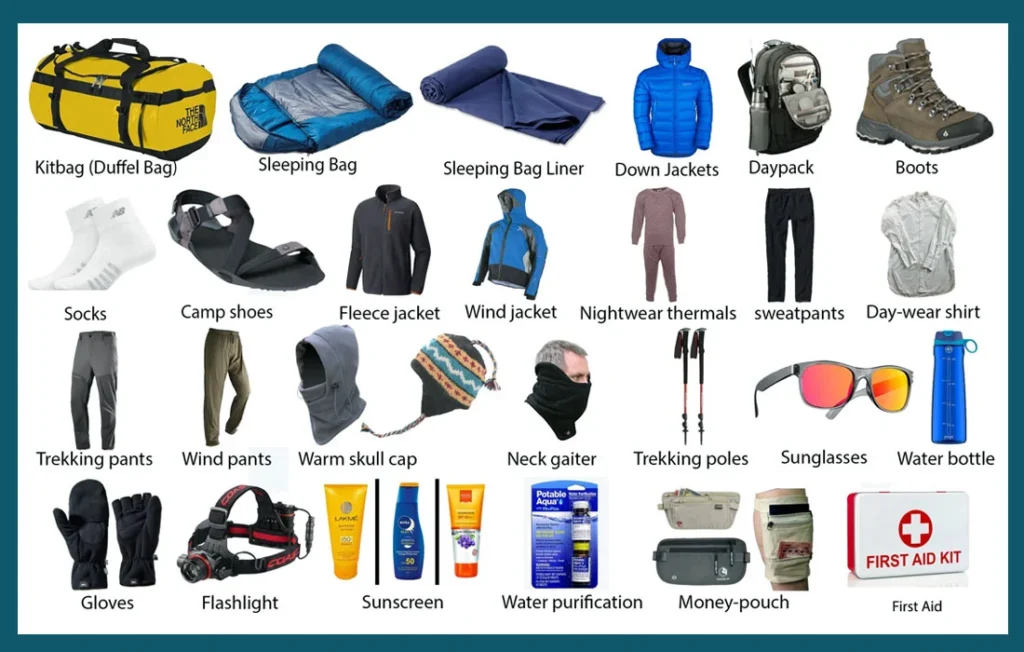
How To Reach
Pick-Up Information
- It is essential for everyone to arrive at Dehradun (06:00 am)
- Pick-up Location – Milan Palace near Railway Station,Dehradun.
- Once you have reached Dehradun, MHE will manage the rest of your travel arrangements, if you have opted for pick-up service, you can select this option during the booking process by adding it as an add-on.
Options to Reach Rishikesh
First, you can arrive at Delhi, Dehradun airport or Chandigarh. The journey from these locations to Dehradun is explained below.
1. Take overnight train/bus to Dehradun.
2. Take overnight train/bus to Haridwar and drive to Dehradun (50km | 1 hr 30 min drive with normal traffic).
3. Take overnight train/bus to Dehradun.
4. Board a flight to Dehradun airport (Jolly Grant Airport) (26 km, 30 min) from Dehradun. If you’re arriving by air, then come one day in advance.
Drop-Off Information
- The designated drop-off point is same as pickup point.
- Reach in Dehradun by 6:30 to 7:30 pm.
- Please consider planning your subsequent travel arrangements after 10:00 pm.
Note – In July and August month always have a buffer day in your Itinerary due to the Monsoon.
- It’s highly advisable to keep a buffer day in your travel plan. If the buffer day is not used, it can be used to explore Dehradun/Rishikesh.
- MHE offers comfortable transportation through Tempo Traveler, Bolero, or equivalent vehicles. If you wish to upgrade your mode of transportation, please contact your trek coordinator for further assistance.
Cost Terms
✅Inclusion
Accommodation (as per the itinerary):
- Triple/quad sharing (separate for males and females throughout the trek)
Meals (Veg + Egg):
- All meals (including tea, soup, snacks, etc.) from Day 1 Dinner to Day 3 Breakfast. Morning and evening tea, accompanied by light snacks, are included in the Tungnath-Chandrashilla trekking package.
3. Support:
- 1 Versatile base camp manager handles communication and deploys extra manpower in emergencies.
- 1 Mountaineering & First aid qualified professional trek Leader.
- 1 Experienced high-altitude chef.
- Local experienced guides (Number of guides depending on the group size).
- Enough support staff.
Trek equipment:
- Sleeping bag, Sleeping liners (if required), mattresses, and Utensils.
- 3 men all season trekker tent (twin sharing), Kitchen & Dining tent, Toilet tent.
- Camping stool, Walkie talkie.
- Ropes, Helmet, Ice axe, Harness, Gaiters & crampons (if required).
5. First aid:
- Medical kit,Stretcher,Oxygen cylinder,Blood pressure monitor,Oximeter,Stethoscope.
6. Transportation (as per the itinerary). Mules/porters to carry the central luggage.
- Cloakroom facility available at the base camp for additional luggage
- All necessary permits and entry fees, Upto the amount charged for Indian
- Trek Completion Certificate.
❌Exclusion
- Insurance (Mandatory).
- Food during the transit.
- Any kind of personal expenses.
- Mule or porter to carry personal luggage.
- Emergency evacuation, hospitalization charge, etc.
- Anything not specifically mentioned under the head Inclusion.
Things can be provided on demand and availability (participant has to pay extra for these things).
- Satellite phone/set phone – is a type of mobile phone that connects via radio links via satellites orbiting the Earth instead of terrestrial cell sites like cellphones. Therefore, they can operate in most geographic locations on the Earth’s surface.
- Gamow/PAC HAPO Bag(Portable Hyperbaric Bag) – is a unique, portable hyperbaric chamber for the treatment of acute mountain sickness (AMS), also known as altitude sickness.
- AEDs (Automated External Defibrillators) are portable life-saving devices designed to treat people experiencing sudden cardiac arrest, a medical condition in which the heart stops beating suddenly and unexpectedly.
Cancellation & Rescheduling Policy
We understand that plans can change. Our policies are simple, transparent, and designed to balance your flexibility with the commitments we make to our local teams.
 Cancellation Policy
Cancellation Policy
- Cancellation requests must be made in writing via email (info@musafirhikes.com)
- The date of cancellation is the date we receive your request, not when it is sent.
Refunds
- 30+ days before trek → Full refund (minus 1.99% processing fee)
- 15–29 days before trek → 80% refund
- 10–14 days before trek → 60% refund
- 5–9 days before trek → 40% refund
- ≤4 days before trek → No refund
Rescheduling Policy
- Requests must also be made in writing (e.g., via email).
- The date of receipt determines rescheduling eligibility.
Rescheduling Fees
- 30+ days before trek → Free reschedule
- 15–29 days before trek → 10% fee
- 10–14 days before trek → 20% fee
- 5–9 days before trek → 30% fee
- ≤4 days before trek → Not possible
Notes
- Refunds are processed within 7–10 business days to the original payment method.
- Timelines are counted from the original trek start date.
- If a trek is affected by weather, natural events, or government restrictions, we will try to reschedule first. If not possible, the cancellation terms above apply.
- Bookings are non-transferable.
- Once rescheduled, treks become non-refundable.
Trek Essentials
Gallery
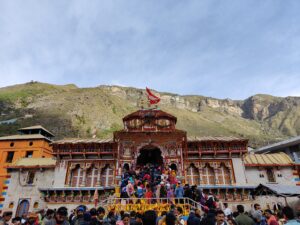
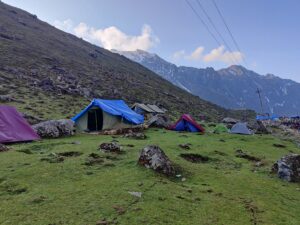
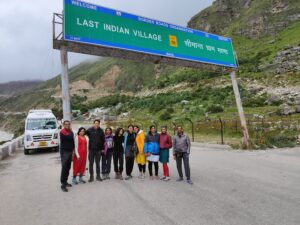
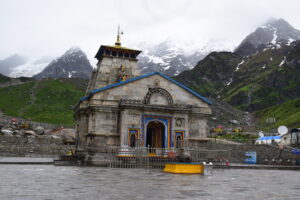
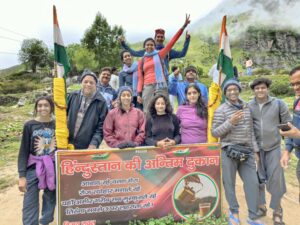
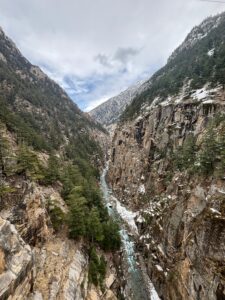
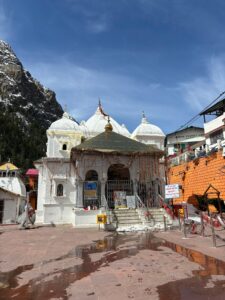
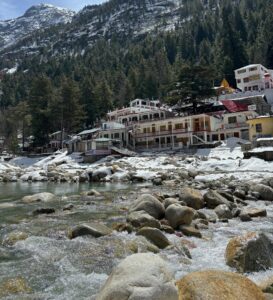
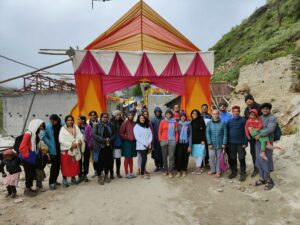
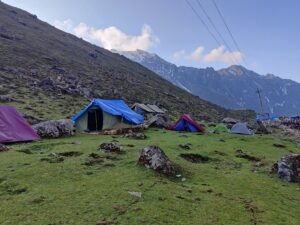
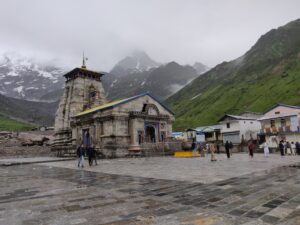
Trek Reviews




Frequently Asked Questions(FAQ)
What is the best time to go for Char Dham Yatra?
The Char Dham Yatra opens in early May and continues till late October. The best months are May–June (pleasant weather, snow-clad peaks) and September–October (clear skies, golden autumn landscapes). Monsoon months (July–August) are beautiful but can be risky due to landslides.
How many days are required for the Char Dham Yatra?
A standard Char Dham Yatra takes around 10–12 days by road. However, shorter itineraries are possible if you travel by helicopter packages (4–5 days).
What is the level of difficulty of the yatra?
The journey includes long drives through mountain roads and moderate-to-strenuous treks (like the 16–22 km trek to Kedarnath and 5 km trek to Yamunotri). Elderly pilgrims often take pony, palanquin, or helicopter services for Kedarnath and Yamunotri.
Is registration mandatory for Char Dham Yatra?
Yes, registration is compulsory for all pilgrims by the Uttarakhand Government. But you don’t need to worry—Musafir Hikes takes care of all the necessary registrations and permits on your behalf. This ensures a hassle-free journey while keeping your Yatra safe and officially documented.
Are there medical facilities available on the route?
Yes, basic medical facilities and emergency services are available at major halts. However, if you have a pre-existing condition, consult your doctor before traveling and keep personal medicines handy.
Can elderly people or children undertake the Yatra?
Yes, but with precautions. Elderly pilgrims should undergo a medical check-up before the journey. Ponies, palkis, and helicopter services are available for difficult stretches. Small children may find the long treks tiring, so plan accordingly.
Is mobile connectivity and ATM facility available on the route?
Connectivity is limited in higher reaches. Jio and BSNL work better in remote areas, but expect frequent network loss. ATMs are available in towns like Uttarkashi, Guptkashi, and Joshimath, but not near temples. Carry enough cash from bigger towns.
Is there a place to leave luggage I don’t need during the trek?
Yes. You can leave extra bags or items at Hotel, safely stored until your return. Just pack a smaller bag with essentials trail days.
Do I need any permits for the trek?
Yes, Permits for Chaar Dhaam Yatra.These are arranged by Musafir Hikes as part of your trek package. You only need to bring a government ID and passport-size photos.
Can trekking equipment be rented?
Yes, jackets, trekking shoes, hiking poles, and backpacks are available for rent.
Are washrooms and drinking water available on the route?
Yes, there are basic public washrooms and drinking water facilities along the trekking routes and at halts. However, carrying a personal water bottle and basic hygiene kit is strongly recommended.
How do I book a tour with Musafir Hikes?
You can book directly through our website or contact us via call/WhatsApp/email. Once you select your tour, you’ll receive a confirmation and payment details.
What is included in the tour cost?
Our tours generally include accommodation, meals (as per itinerary), guide charges, permits, and basic medical support. Exclusions usually cover personal expenses, travel insurance, and anything not mentioned in inclusions.
Is it safe to travel with Musafir Hikes?
Yes. Your safety is our top priority. We follow government trekking norms, carry first aid, and our guides are trained in mountain safety and emergency handling.
How difficult is the trek/tour? Do I need prior experience?
Difficulty varies from tour to tour. Most treks are designed for beginners with good fitness, while some require prior high-altitude experience. Fitness preparation tips are always shared after booking.
How do I prepare physically for the trek?
We recommend regular walking/jogging, stair climbing, or light cardio at least 3–4 weeks before the trek. Staying hydrated and building stamina will make your experience much easier and enjoyable.
How do I reach the starting point of the trek?
We provide details of the nearest railway station/airport and assist with travel planning. Transport from pickup points (like Rishikesh/Dehradun) is usually arranged with the group
Why should I choose Musafir Hikes?
We focus on safety, sustainability, and local community support. A part of your booking helps uplift Himalayan villages, making your journey meaningful.
